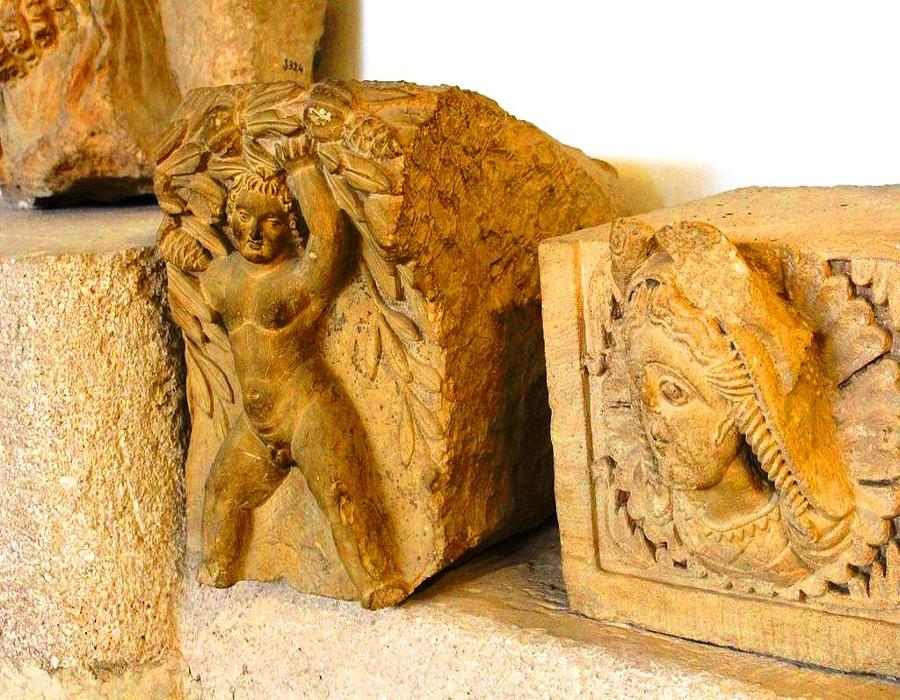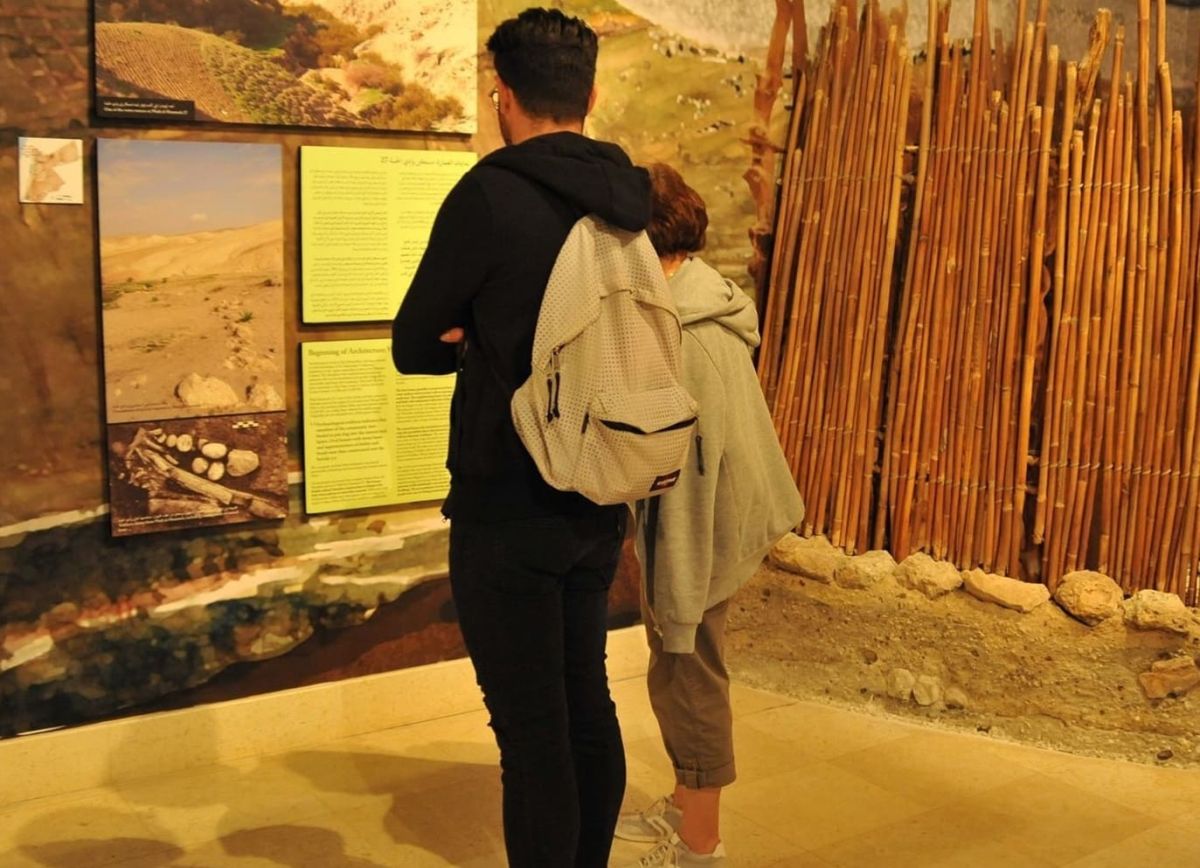The Archaeological Museum in Amman is the ideal destination for those who are interested in Jordan tours. It is home to an extensive collection of archeological artifacts, like Ain Ghazal statues dating back 9000 years and plastered skulls from Jericho.
The Archaeological Museum in Amman History
The Jordan Archaeological Museum was established in 1951 to showcase archaeological and historical collections from Jordan's prehistoric era to Islamic rule. The artifacts it houses provide insight into human civilization from prehistory through Islamic rule.
The museum exhibits are organized chronologically and feature items that offer insight into daily life, such as flint tools, pottery shards, glassware, and metalwork objects, alongside more artistic creations like jewelry and statues.
One of the museum's most notable exhibits is a set of plaster statues known as Ain Ghazal Statues, that are believed to be among the oldest human-created figures ever. Dating back 9,000 years, these figures look like friendly extraterrestrials to modern visitors but were likely made out of lime plaster and represent one of the earliest instances of humans with fully formed faces one the best ways to explore this unique museum is Jordan day tours
Highlights include the 2,000-year-old Tel Siran copper flask and Taiki Amman statue, believed to be among the first examples of human figurines with fully formed bodies. Also on display are numerous seals, pottery coffins reminiscent of their pharaonic predecessors and gold jewelry and coins.
The Jordan Archaeological Museum is Jordan's primary museum dedicated to cultural heritage and history, making it an excellent way for both visitors and residents alike to gain more insight into Jordanian society through rare archaeological finds from over 9,000 years of history.
A Journey Through the Jordan Archaeological

The museum houses artifacts spanning various archaeological sites throughout Jordan and presents them in an engaging manner. It is divided into a number of halls and exhibits; its first section introduces visitors to Nabatean culture and geological findings while also featuring pottery, abrasive metal tools, engravings on gold ornaments, bronze statues and bronze ornaments from Nabatea. Meanwhile, its second section showcases archaeological finds from Ayla and includes collections dating back to Rashidun, Umayyad, Abbasid and Fatimid periods, respectively There are alot of things to do in Jordan with our special guides in Jordan travel packages
Ain Ghazal statues, considered among the earliest human sculptures ever fashioned, and plastered skulls from Jericho are displayed alongside coins, jewelry and stone and glass pieces from this collection.
Established in 2014, this museum is the largest in Jordan and tells its rich history through rare archaeological artifacts - some over 9,000 years old! Situated in one of Amman's up-and-coming neighborhoods.
Amman is home to more cultural centers than just the Jordan Museum. You can see more about Amman on the Amman private tour. Many others exist to showcase the country's heritage and promote public engagement. Nabad, for instance, features exhibitions and concerts while also serving as an event space. Nofa Creative Space provides another platform for emerging and established visual artists from throughout Jordan and beyond.
From Petra to Amman: Exploring Jordan's History Through One Museum
At Amman's Citadel in downtown Amman lies the Jordan Museum.In Jordan classic tours, visitors will find collections depicting Jordan's cultural history from the Paleolithic to the Islamic periods: pottery, metal utensils, gold jewelry, coins, statues crafted of stone, plaster, or marble, as well as seals. Each exhibit has been organized chronologically so visitors can explore Jordan's rich heritage of civilizations past and present.
Antiquities protection has become an urgent task given political unrest. Therefore, the GPIA and Department of Antiquities (DoA) have joined forces to establish a four-year project funded by Gerda Henkel Foundation that includes training courses, risk management plans, and documentation of archaeological inventories.
Ihab Amarin, director general of Jordan National Museum, explained that instead of viewing its displays as "objets d'art," it is crucial to comprehend their original contexts, uses, and functions. He discussed its governance structure, that values partnerships, while envisioning becoming a national storyteller of Jordanian history.
Visit Jordan's Archaeological Museum during your trip. Combine it with visits to Amman Citadel and Roman Theater for maximum impact, or make an excursion from Petra directly to Amman to view this important museum.
Visitor Experience

The Jordan Archaeological Museum boasts an expansive collection that spans the country's entire history. Exhibits range from prehistoric times through Islamic rule and help visitors better comprehend its evolution over time.
The museum offers some truly extraordinary artifacts that should not be missed. Some examples include Ain Ghazal statues, among the world's oldest human form sculptures; Neolithic plastered skulls; large anthropomorphic sarcophagi from the Iron Age; and a stunning white marble bust depicting a Nabataean fish-goddess from Nabataean mythology.
In addition to exhibiting artifacts, the museum also provides educational activities for both children and scholars. As a pioneer in community archaeology, an approach in which local communities participate actively in archaeological projects, this approach serves to bridge the gap between researchers and the general public.
As soon as you step inside the museum, two grand sculptural figures of Zeus and Aphrodite greet visitors as you arrive. These two gods of sky and heaven can be found high atop Mount Olympus - the highest peak in Greek mythology, making for one of the highlights of Amman's Archaeological Museum.
This museum is situated on Citadel hill in Amman, which is recognized by UNESCO as a World Heritage site. At 850 meters above sea level and overlooking the city of Amman, this prestigious institution can be found; Amman Citadel features forts, temples, and palaces that were once at the center of life in this ancient city You can explore the top destination in Jordan on Tour to Madaba, Mount Nebo, and Dead Sea



-webp.webp)
-webp.webp)

-webp.webp)



